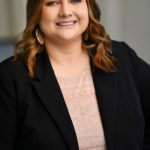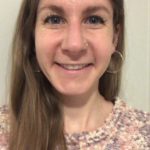
Ramya Palaniappan is a first year Masters of Public Health, Maternal and Child Health student. Her passion for maternal health started in college when she interned at a productive health clinic and found a love for women’s health and social justice. After college, she did an AmeriCorps year at a day shelter for women and children, and then returned back home to work at the same reproductive health clinic. Her public health interests included health equity, maternal health and birth outcomes. During her free time, Ramya likes to cook, be outdoors and listen to podcasts!
“Right after undergrad, I did a year of service at a day shelter for women, children and non-binary folks experiencing homelessness. My role was to direct the food program and assist in the management of the hospitality room. This year was challenging yet rewarding. I was grateful to be a part of a team that provided care specifically for women dealing with loss of home since many of the homeless services in downtown Portland served predominantly men or families.
The lessons that I learned through this position emphasized the importance of self-reflection when working with marginalized communities and when implementing a program. First, coming into this role, it was important for me to unpack any preconceived notions that I had about people experiencing homelessness. I was always taught to stay away from people on the street and this was reinforced by our societal norms. But through this year, I understood that all people just want to be seen, heard and valued. People experiencing homelessness are often denied this dignity and denied the basic rights that come with having a roof over your head.
One of my projects in this position was to assess levels of food insecurity in the population we were serving. I created a food security survey and left it at the front desk for everyone to fill out. However, no one filled it out. I took some time individually and with my supervisor to brainstorm ideas on how to garner interest in this survey. I quickly realized that many people experiencing homelessness have filled out an abundance of paperwork and have waited in ridiculously long lines to receive services. Filling out more forms was not of interest to a lot of people who came into our hospitality room. In addition, I remembered a conversation that I had with one of our guests during my first month in the position. She told me that while she appreciated our community space, what she wanted most was a door. Each shelter and service that she used was crowded, and she just wanted a door to close it all out. Because of these reflections, I decided to switch my survey to a one-on-one interview. People had the opportunity to sign up to chat with me individually. Changing how the survey was distributed allowed more people to voice their opinions and share their experiences. This was an important lesson for me on community engagement because it illustrated the significance of having projects catered to the population you are working in.”
-Ramya Palaniappan

